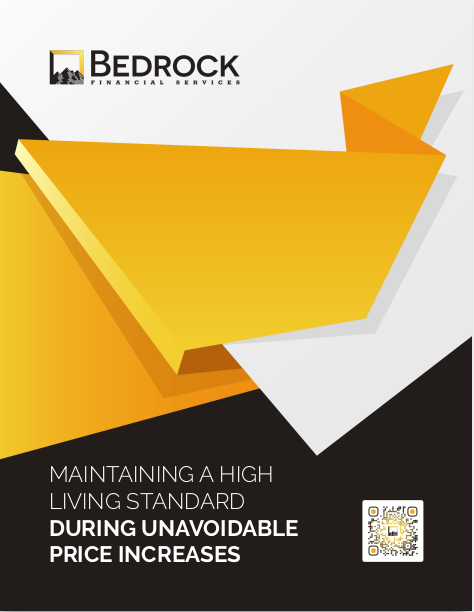Key Takeaways
-
If you want clients to stay engaged during insurance conversations, how you frame the information matters more than the fine print.
-
By using real-world metaphors, storytelling, and question-based reframing, you can explain complex coverage clearly—without ever losing your client’s attention.
The Real Reason Clients Tune Out Insurance Talk
Insurance is one of the most important financial tools your clients have—and one of the least understood. Not because your clients aren’t smart. They are. But the default way insurance is often explained is what causes the problem: it’s abstract, technical, and focused on products instead of people.
When you start with riders, premiums, benefit structures, or exclusions, clients don’t hear protection. They hear complexity. What they want is security, clarity, and relevance. And that’s exactly what you can give them if you reframe how you talk about insurance.
Start with the Emotional Anchor Before the Product Explanation
Clients don’t buy insurance. They buy peace of mind. Start with that.
Instead of opening a conversation with the features of a life, disability, or long-term care policy, ask them this:
-
“What would it look like if your income stopped tomorrow?”
-
“If you got really sick, what’s the one thing you’d most want protected?”
-
“What role do you want insurance to play in your legacy or in caring for your family?”
These aren’t product questions. They’re values questions. They bring the discussion into your client’s world—not the insurance company’s. Once that emotional relevance is established, you can bridge to the actual options that fulfill those values.
Use Visual Framing to Replace Verbal Overload
Insurance language can easily overwhelm. Charts, policy documents, and industry terms don’t stick. But a visual metaphor? That does.
Try reframing complex concepts with basic visual structure:
-
The Umbrella Frame: When describing layers of protection (e.g., health, disability, life), show how one policy can cover gaps another doesn’t—like an umbrella that expands in a storm.
-
The Building Blocks Frame: Use this when layering multiple types of coverage over time. Show how each piece supports a different stage of life.
-
The Bridge Frame: Position insurance as a temporary safety net until retirement savings or investments take over. Clients often feel more at ease seeing insurance as a transition tool, not a permanent fixture.
Even if you’re not using literal visuals, framing insurance as something you can picture—a shield, a safety net, a handoff—makes retention far stronger.
Replace Jargon with Scenarios They Already Understand
Let’s be honest: words like “deductible,” “accelerated benefit,” or “nonforfeiture clause” rarely help you connect.
Instead, connect to experiences clients already have. If they own a car, they understand the idea of liability. If they’ve rented an apartment, they’ve seen security deposits vanish unexpectedly. If they’ve raised children, they understand how fast costs rise.
Reframe insurance talk by referencing those familiar contexts:
-
“Think of this like putting a security deposit on your future health. You’re prepaying protection for worst-case scenarios.”
-
“It’s like roadside assistance for your finances. It doesn’t prevent the flat tire—but it gets you back on the road.”
-
“This benefit acts like cruise control—once you’re in retirement, you don’t have to keep adjusting it manually.”
Help Clients See Timelines, Not Just Payments
Most insurance conversations hover around monthly premiums. That’s what clients expect. But what they need is a timeline of what happens when life events hit.
Build the conversation around moments instead of money:
-
Now: What coverage is in place? What needs immediate fixing?
-
Next 10 Years: What family or career milestones could affect their needs?
-
Later Life: How will policies complement Social Security or retirement income?
Then anchor your explanation in duration:
-
This coverage lasts 20 years to protect your highest-earning years.
-
This rider activates immediately and stays in place until age 65.
-
This policy builds cash value by year 5 and can be accessed tax-free by year 15.
Timelines give clients a mental structure they can follow. It makes insurance feel proactive—not reactive.
Ask Instead of Tell: Use Question-Based Framing
One of the best ways to engage your clients is to let them fill in the blanks.
Instead of saying, “This long-term care plan provides a daily benefit of $150,” ask:
-
“If you couldn’t bathe, dress, or feed yourself, how much help would you need every day?”
-
“Would you want care at home or in a facility?”
-
“Who in your life would most likely step in first—and are they prepared to do that?”
When clients answer these types of questions, they create their own logic for why coverage matters. They’re not being sold to—they’re solving a problem they just realized they have.
This framing turns you into a facilitator, not a salesperson.
Use Repetition with Variation
You might think repeating yourself sounds unprofessional. But in insurance conversations, repetition—when done strategically—builds clarity.
Frame the core message multiple times, using different lenses:
-
“This policy protects your income.”
-
“It ensures your monthly obligations are covered, even if you’re not working.”
-
“It allows you to focus on recovery, not bills.”
-
“It buys your family time.”
The message is the same, but each version lands slightly differently. This technique increases comprehension without adding length or complexity.
Talk About Trade-Offs, Not Just Benefits
No insurance policy is perfect. Instead of glossing over limitations, make trade-offs part of the conversation. It increases your credibility.
Try this structure:
-
“Here’s what this policy does really well.”
-
“Here’s what it doesn’t cover.”
-
“And here’s why we might still choose it—for your situation.”
You’re not just recommending coverage. You’re showing your client how you’re weighing the decision. That’s trust-building.
Give Them Ownership Through Choices
Clients engage more deeply when they feel in control.
Don’t present one solution. Present two or three clear, differentiated options. Make sure each option:
-
Connects back to their values.
-
Shows a timeline of protection.
-
Has a trade-off clearly stated.
Then ask: “Which one feels most aligned with your priorities?”
When you present choices like this, clients lean in. They don’t feel boxed into a pitch—they feel empowered to decide.
Turn the Conversation Into a Shared Plan
By the end of an insurance conversation, your client should feel like they helped build the strategy—not just approved it.
Summarize the plan in their language:
-
“You told me caring for your aging parents is your top concern. We’ve built in a policy that covers that need first.”
-
“You said your income is critical to your family’s lifestyle. That’s why we prioritized disability coverage.”
When you reflect their words back, you reinforce that the strategy isn’t theoretical. It’s theirs.
What You Say Isn’t Everything—It’s Also How You Say It
Energy matters. If you sound hesitant, robotic, or overwhelmed by details, your clients will mirror that discomfort.
Instead:
-
Use confident tone shifts. Emphasize emotionally significant words.
-
Slow down when describing key protections.
-
Pause after major benefits to let them sink in.
-
Ask often: “Is this making sense so far?”
You’re not trying to impress with knowledge. You’re trying to connect through clarity. In 2025, when attention spans are shorter and skepticism is higher, tone and pacing matter as much as content.
Helping Clients Stay Engaged Starts with How You Frame the Conversation
You don’t need a new product lineup to be a more effective advisor. You just need a different lens.
When you lead with relevance, frame with visuals, ask the right questions, and share ownership of the strategy, your clients actually want to talk about insurance. You become a trusted translator—not just an advisor.
And if you’re ready to turn this client-first approach into a scalable system, we’re here to help.
At Bedrock Financial Services, we support professionals like you with automation tools, tailored training, and compliant marketing assets that simplify these exact types of conversations. Join us to gain resources that help you sell smart—and serve even smarter.







